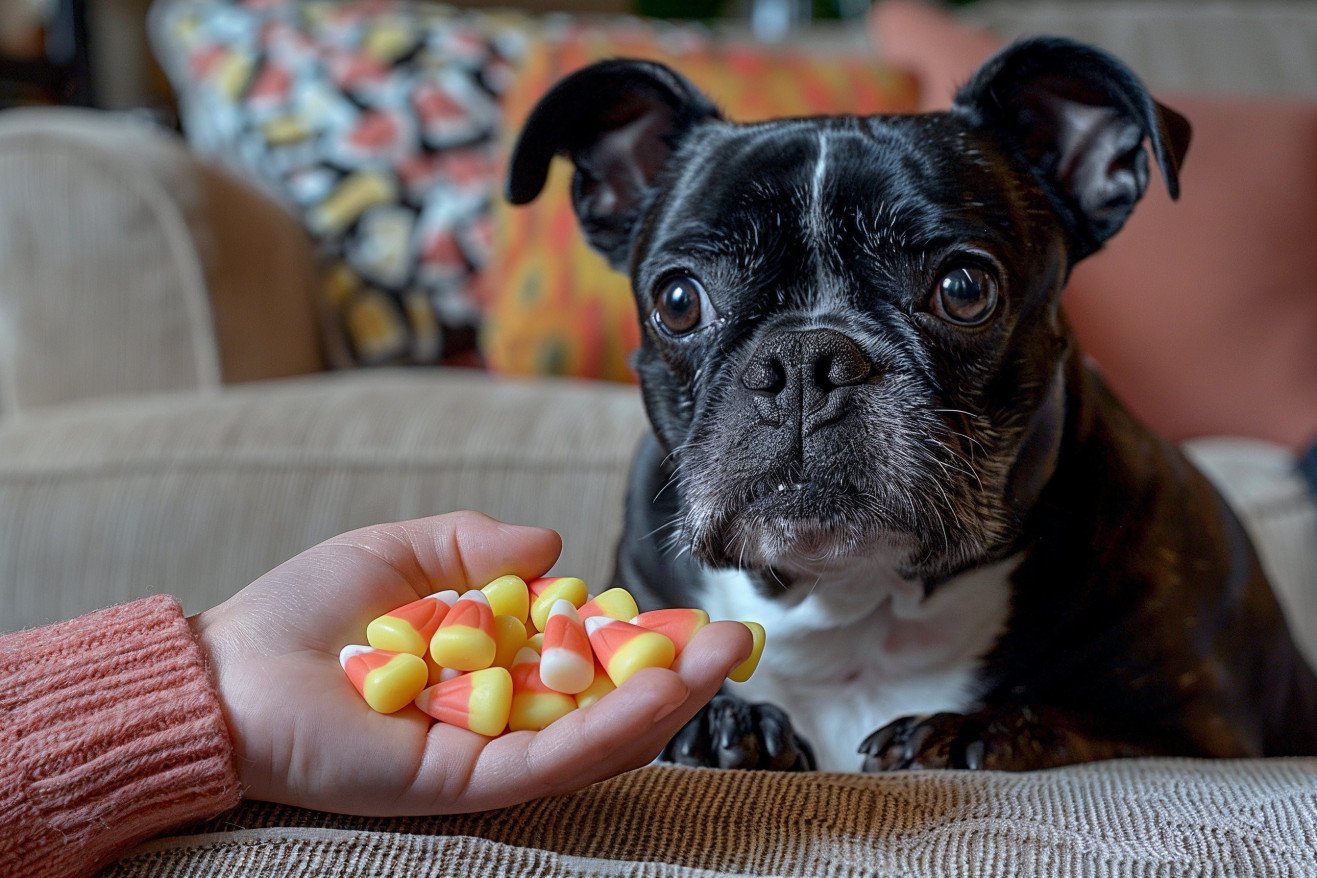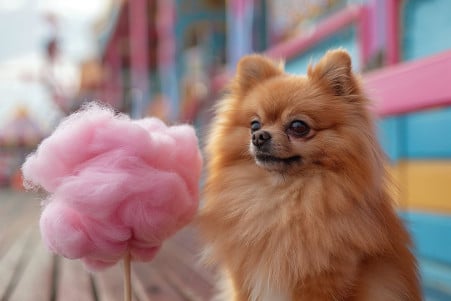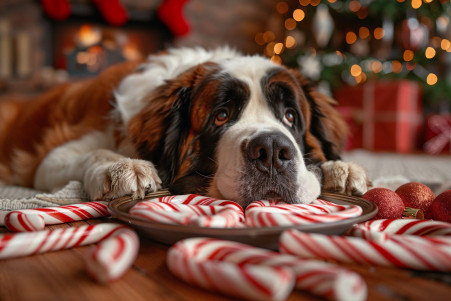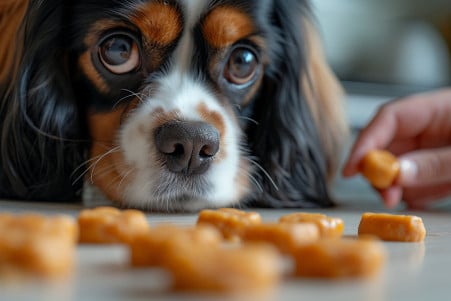Can Dogs Eat Candy Corn? A Look at Canine Nutritional Needs
30 March 2024 • Updated 29 March 2024

While candy corn may seem like a festive snack for your dog, is it safe to share this sweet treat with your furry friend? Although candy corn is not poisonous to dogs, it is not nutritious and could lead to weight gain and digestive issues if your dog eats too much. As a result, it's best to stick to dog-friendly treats and keep candy corn out of your dog's reach.
Given the increase in pet obesity and the fact that many dog digestive issues can be traced back to diet, we will explore the scientific evidence on how dogs process candy corn and other sugary foods. This will help you understand what dogs need nutritionally, so you can make the best choices about what treats to give them and how to help them stay healthy and happy throughout their lives.
Can dogs eat candy corn?
Risks and Hazards of Candy Corn for Dogs
Although candy corn is not toxic to dogs in and of itself, it can still be very risky if your dog eats a large amount of it. The sugar in candy corn can lead to obesity, diabetes, and other health problems in dogs. As noted by PetMD, sugary foods can cause a dog's digestive system to go into shock, leading to gas, bloating, abdominal pain, diarrhea, and even pancreatitis, which can be life-threatening.
That said, candy corn with xylitol or chocolate in it is even more dangerous. Xylitol can cause a dog's blood sugar to drop to dangerous levels and can also cause liver failure. Meanwhile, chocolate contains theobromine, which is toxic to dogs and can lead to vomiting, tremors, seizures, and other severe symptoms.
Even if candy corn with xylitol and chocolate is avoided, the sugar and fat in regular candy corn can still cause digestive problems in dogs. According to veterinary professionals, vomiting, diarrhea, inappetence, lethargy, and pancreatitis can all result from a dog eating too much candy corn. While a small amount may not cause immediate harm, candy corn has no nutritional value for dogs and can be risky for them to eat.
Symptoms to Look Out For After Your Dog Eats Candy Corn
According to veterinary professionals, if a dog has eaten candy corn, pet parents should look for signs of gastrointestinal upset, including vomiting, diarrhea, abdominal pain, and lethargy. They should also be aware that more serious symptoms, such as weakness, incoordination, tremors, or seizures, could be a sign of xylitol poisoning and will require immediate medical attention.
As a case report explains, the severity of the symptoms will depend on the size of the dog and the amount of candy corn they have eaten. Even if the dog doesn’t show any symptoms right away, it’s important to contact a vet because complications can arise later. According to experts, vomiting, diarrhea, lethargy, loss of appetite, and abdominal pain are all symptoms that a dog has ingested something toxic.
First Aid: What to Do If Your Dog Eats Candy Corn
If your dog eats candy corn, the first thing you should do is call a veterinarian or pet poison control center for advice immediately, according to VCA Animal Hospitals. You should not try to make your dog vomit unless a veterinary professional tells you to, as this can be dangerous.
If the case is mild, the vet may suggest that you watch your dog, make sure they drink plenty of water, and then give them a light meal after a period of fasting, according to a case report. More serious cases, especially those involving xylitol, may require immediate medical attention to treat symptoms such as low blood sugar or liver failure, says VCA Animal Hospitals.
Healthy, Pet-Friendly Alternatives to Halloween Candy
Instead of giving dogs candy corn and other human treats, dog parents can choose from a number of pet-friendly, healthy alternatives. According to Red Dog Blue Kat, homemade treats made with ingredients like pumpkin, yogurt, peanut butter, and oats can be a great way to celebrate Halloween with your pets. In addition, many pet stores and online retailers sell a variety of Halloween-themed dog treats made with healthy, safe ingredients, as pointed out by Rover.
Of course, no matter what kind of treats you give your dog, it's important to introduce them in moderation and watch for any signs of stomach upset, according to Raleigh Vet. However, by offering pet-friendly, healthy alternatives, dog parents can make sure their four-legged family members have a happy and safe Halloween.
How to Keep Dogs From Eating Candy Corn
The only way to guarantee that your dog won't eat candy corn is to make sure they can't get to it in the first place, according to Sit Means Sit College Station. This means keeping all Halloween candy in a place where your dog can't access it, like a locked cabinet or a high shelf. It's also important to make sure that everyone in your household knows the rules and understands that they can't leave candy where the dog can get to it.
When you're passing out candy on Halloween, Trupanion suggests keeping your dog in a separate room or behind a baby gate so that they can't get to the front door. This way, you can be sure that they won't eat any candy that's dropped or thrown away. As AERC points out, even candy wrappers can be dangerous if your pet eats them.
By taking steps to make sure that your dog can't get to candy and making sure that your household members know the rules, you can help make sure that your dog has a safe and happy Halloween. It's also important to make sure that you stay on top of candy storage and pet supervision to make sure that your dog doesn't accidentally eat anything that could make them sick.
Conclusion: How to Help Dogs Stay Safe and Healthy This Halloween
While candy corn itself is not toxic to dogs, it still poses potential health risks and should be avoided as a treat. Dog owners should be vigilant about restricting access to all Halloween candy, which can contain dangerous ingredients like xylitol and chocolate. If a dog does accidentally ingest candy corn, it's crucial to monitor for symptoms and contact a veterinarian immediately if any issues arise.
By understanding a dog's nutritional needs and providing appropriate, pet-safe alternatives, owners can ensure their furry friends enjoy a happy and healthy Halloween.


